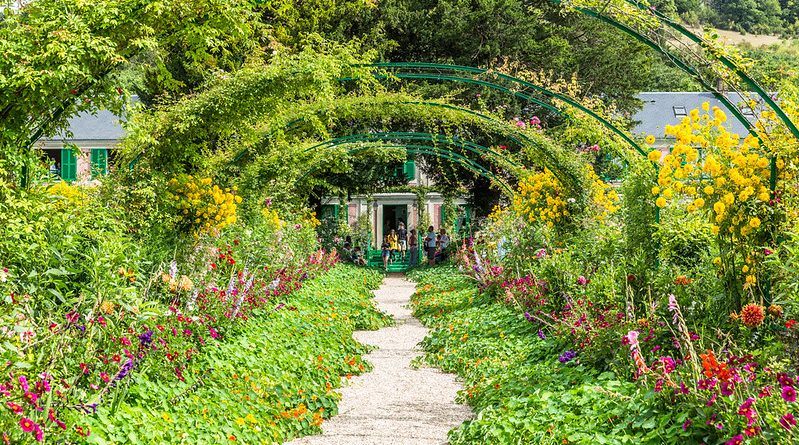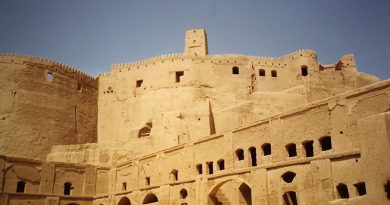Monet’s Garden
When French impressionist artist Claude Monet and his family settled in Giverny in 1883 the piece of land sloping gently down from the house to the road was planted with an orchard and enclosed by high stone walls.
From this land of about one hectare, Monet made a garden full of perspectives, symmetries and colours. It is known as the Clos Normand .
Monet mixed the simplest flowers (daisies and poppies) with the rarest varieties. . He married flowers according to their colours and left them to grow rather freely.
With the passing years he developed a passion for botany, exchanging plants with his friends.Always on the look-out for rare varieties, he bought young plants at great expense. “All my money goes into my garden,” he said. But also: “I am in raptures.”
The water garden
In 1893, ten years after his arrival at Giverny, Monet bought the piece of land neighbouring his property on the other side of the railway. It was crossed by a small brook, the Ru, which is a diversion of the Epte, a tributary of the Seine River. With the support of the prefecture, Monet had the first small pond dug ; even though his peasant neighbours were opposed. They were afraid that his strange plants would poison the water.
Later on the pond would be enlarged to its present day size. The water garden is full of asymmetries and curves. It is inspired by the Japanese gardens that Monet knew from the prints he collected avidly.
In this water garden you find the famous Japanese bridge , built by local craftsmen ,covered with wisterias planted by Monet, other smaller bridges, weeping willows, a bamboo wood and above all the famous nympheas which bloom all summer long.
Monet would find his inspiration in this water garden for more than twenty years.
Restoring Monet’s house and garden
After Monet’s death in 1926, his son Michel inherited the house and garden of Giverny. He did not live there and it was Monet’s step-daughter Blanche who took care of the property.
After the Second World War the house and garden fell into neglect. In 1966 Michel Monet gifted the house and garden to the Academie des Beaux-Arts.
In 1977 Gérald van der Kemp was appointed Curator at Giverny. André Devillers, who had known Georges Truffaut – a distinguished gardener who exchanged ideas with Monet – helped him reconstruct the garden as it was by the time of the master.
It took ten years to restore the garden and the house their former magnificence.
The pond had to be dug again. In the Clos Normand soil was removed and the same flower species as those discovered by Monet in his time were re planted.
Thanks to generous donors, mostly from the USA ,the house was given a facelift. The ancient furniture and the Japanese prints were restored.
The property has been open to the public since September 1980.
Now 500 000 visitors re discover Monet’s gardens each year during the seven months that they are open.




